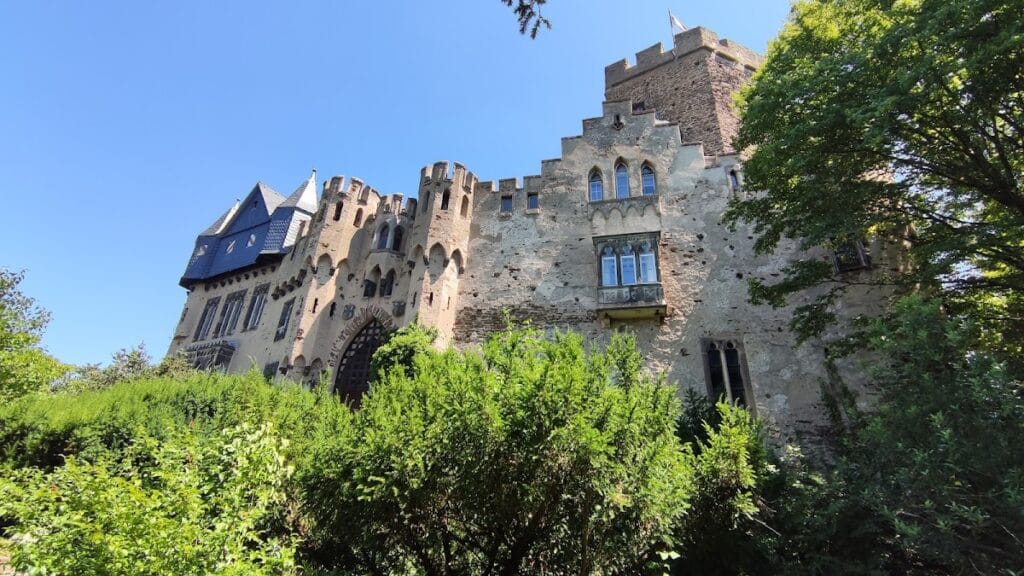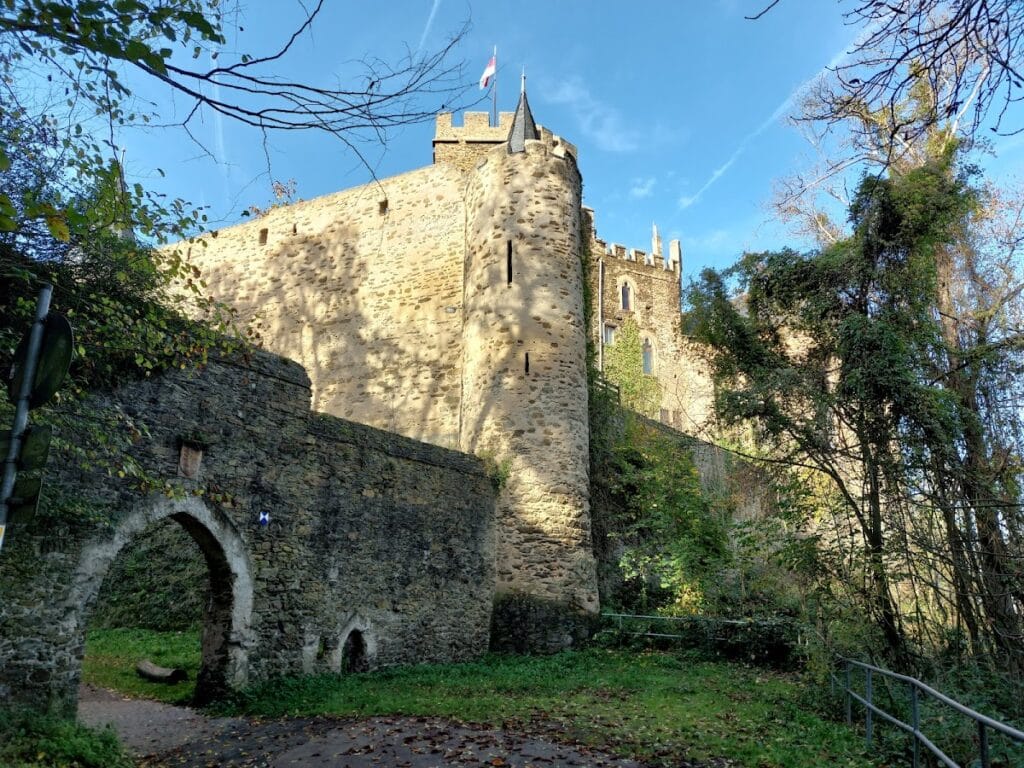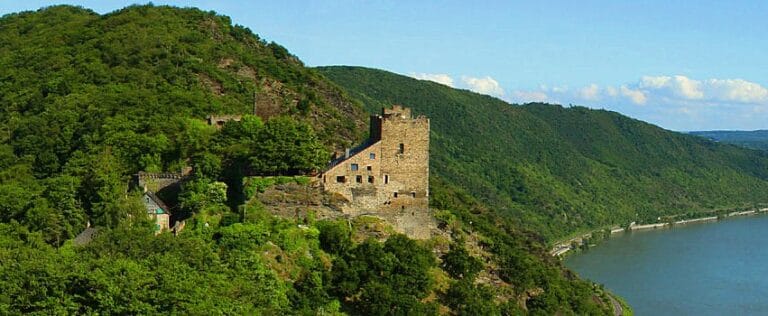Lahneck Castle: A Medieval Fortress in Lahnstein, Germany
Visitor Information
Google Rating: 4.3
Popularity: Medium
Google Maps: View on Google Maps
Official Website: www.burg-lahneck.de
Country: Germany
Civilization: Medieval European
Remains: Military
History
Lahneck Castle stands in the town of Lahnstein, Germany, and was erected by the Archbishop of Mainz, Siegfried III of Eppstein, in 1226. The fortress was intended to safeguard the archbishop’s holdings at the meeting point of the Lahn and Rhine rivers, including the nearby silver mines acquired a few years earlier, around 1220, and the settlement of Oberlahnstein.
By 1245, a chapel dedicated to Saint Ulrich of Augsburg was completed within the castle walls, marking both a religious and administrative development. That same year, the first recorded burgrave, Embricho von Lahneck, was noted as the castle’s governor. Throughout the late 13th and early 14th centuries, the castle witnessed significant political turmoil. In 1298, King Adolf of Nassau lodged at Lahneck shortly before his fatal encounter in battle. His successor, King Albert I, faced opposition from the burgrave Friedrich Schilling of Lahnstein, who conspired against him. This led to a siege in 1309 during which the castle was stormed, and Schilling was executed.
A dramatic legend is connected to Lahneck Castle in 1312, claiming that the last twelve Knights Templar sought refuge there and perished heroically defending it against the forces of Archbishop Peter von Aspelt. Though unconfirmed by direct evidence, this tale contributes to the site’s storied past.
Religious importance continued into the 14th century. In 1332, Pope John XXII granted a forty-day indulgence—an allowance of reduced penance—to those attending worship services in the castle chapel, a privilege documented by a preserved copy displayed onsite. Political significance was reinforced when, in 1338, Archbishop Heinrich III of Virneburg departed Lahneck to participate in the assembly of prince-electors at Rhens, where the Kurverein zu Rhense, an electoral treaty, was established.
Lahneck Castle played a decisive role in the imperial politics of 1400. Four Rhenish prince-electors convened in Oberlahnstein to depose King Wenceslaus. The castle hosted numerous city representatives during this event. The following day, the electors chose Rupert of the Palatinate as the new King of the Romans, marking a crucial moment in the Holy Roman Empire’s history.
In response to evolving military threats, Archbishop Diether II of Isenburg undertook major fortifications in 1475. These included the addition of a secondary curtain wall with an enclosed killing zone known as a zwinger, three shell towers for flanking defense, the Fox Tower, and a square gate tower positioned on the castle’s vulnerable attack side.
The castle’s military importance declined after suffering heavy damage during the Thirty Years’ War, when Swedish and Imperial forces attacked in 1632 and 1636. Later, in 1688, French troops burned the remaining roofs amid the Nine Years’ War, further diminishing its strategic value.
Following secularization in 1803, Lahneck Castle passed from ecclesiastical control to the Duchy of Nassau and then entered private ownership. Prominent owners included Edward Moriarty from 1850, Count Ewald von Kleist-Wendisch-Tychow in 1878, and later Admiral Robert Mischke from 1907, whose family retains possession today. Restoration efforts began in the mid-19th century, reflecting a neo-Gothic revival style, and continued sporadically until 1937. These renovations involved changes such as removing romantic crenellations and converting flat roofs into pointed ones during the 1930s.
The castle is also linked to cultural events. In 1774, the poet Goethe was inspired to compose “Geistesgruß” while navigating the Rhine near Lahneck. Additionally, Lahneck gained attention abroad due to the tragic 1851 death of 17-year-old Idilia Dubb, who was accidentally trapped and perished in the castle’s pentagonal bergfried after the collapse of wooden stairs, an incident that increased its notoriety in Britain.
Today, Lahneck Castle is recognized as part of the Upper Middle Rhine Valley UNESCO World Heritage Site, reflecting its valued place in both regional history and heritage protection.
Remains
Lahneck Castle is situated on a steep rock spur rising 164 meters above sea level, commanding views along the Lahn River at its junction with the Rhine. The overall layout presents a symmetrical, elongated rectangular shape typical of castles built during the late Hohenstaufen dynasty period (12th–13th centuries). Constructed primarily of stone, its thick defensive walls showcase traditional medieval fortress architecture designed to control the surrounding landscape.
The bergfried, or main tower, stands approximately 29 meters tall and is notable for its rare pentagonal plan. The pointed side faces south, deliberately oriented toward the castle’s most vulnerable approach to help deflect incoming projectiles such as stones—an innovative defensive feature for its time. Today, the bergfried offers extensive panoramic views of both river valleys, including sightlines to nearby landmarks like Schloss Stolzenfels and Koblenz. Although generally closed to the public due to safety concerns, guided tours occasionally allow access to parts of this tower.
Inside the castle grounds stands the Gothic chapel dedicated to Saint Ulrich, constructed in 1245. The chapel contains a unique copy of the papal indulgence issued in 1332 by Pope John XXII, which granted reduced penance to those attending services here, highlighting the site’s continuing religious role. The chapel’s architectural style and preserved artifacts connect visitors with its medieval spiritual origins.
Significant late medieval enhancements from 1475 include a second defensive wall equipped with a zwinger, a fortified outer courtyard or killing zone that served to trap and expose attackers. This complex also incorporates three shell towers, rounded bastion-like structures designed for enhanced defense and flanking fire. Added at this time were the Fox Tower and a square gate tower positioned on the side vulnerable to assault, reinforcing the castle entrance’s security.
Restoration efforts during the 19th and early 20th centuries altered some elements to reflect the neo-Gothic aesthetic popular at the time. Notably, romanticized crenellations were removed, and the previously flat roofs were replaced by pointed roofs more consistent with Gothic ideals. These modifications were carefully integrated into the existing medieval fabric, preserving the castle’s medieval character while adapting its silhouette.
Lahneck Castle remains connected to several important regional hiking routes including the Rheinsteig, Rheinhöhenweg, Lahnhöhenweg, and the Lahn-Camino, underscoring its continuing integration with the cultural landscape. Within the castle interior, a life-sized portrait of Queen Victoria remains on display, a relic dating from the period when the estate belonged to Count von Kleist-Tychow.
Excavations and restorations have yielded significant archaeological findings. Among these are the diary and skeletal remains purportedly belonging to Idilia Dubb, recovered from the bergfried during later work on the structure. These discoveries provide a tangible link to one of the castle’s most poignant stories and contribute to its historic narrative.
Overall, Lahneck Castle’s surviving fortifications, religious buildings, and defensive innovations offer a rich testimony to its role across centuries as a military stronghold, political stage, and cultural symbol in the Middle Rhine Valley.










